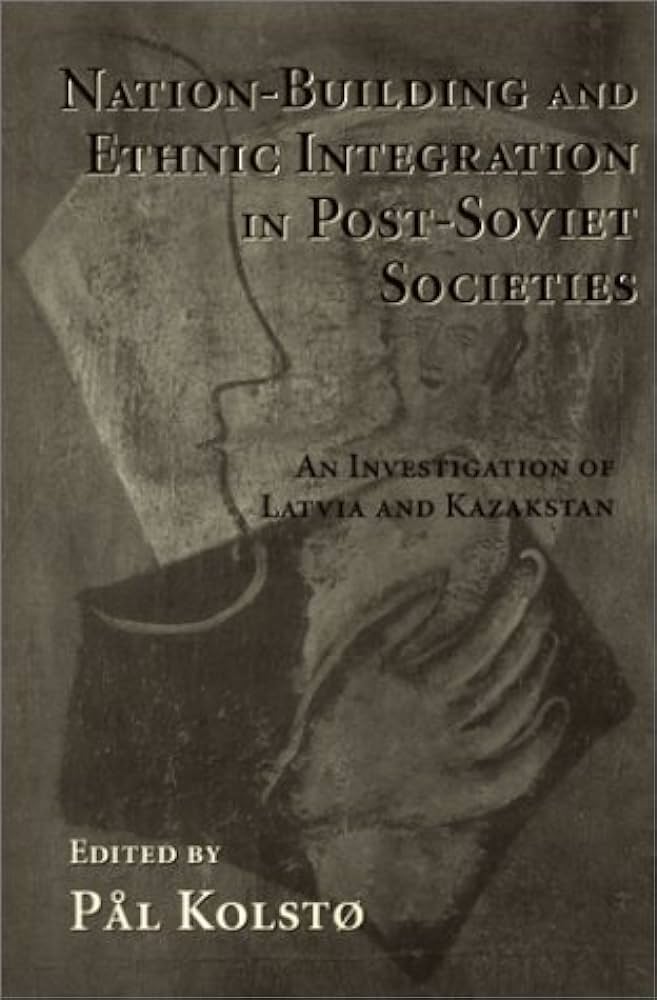
Nation Building And Ethnic Integration In Post-soviet Societies: An Investigation Of Latvia And Kazakstan
By Pal KolstoSeveral bipolar states of the world, such as Rwanda, Burundi, and Sri Lanka, have experienced savage bloodshed and even to the total collapse of state order. By contrast, Latvia and Kazakhstan have so far to a remarkably high degree been spared the kind of communal violence which has erupted in many other Soviet successor states. This book gives an in-depth analysis of ethnopolitics in Latvia and Kazakhstan and explores the reasons for this tranquil outcome. Of all the states of the former Soviet Union, it is in Latvia and in Kazakstan that the titular nation represents the lowest share of the total population: as of 1997, approximately 57% in Latvia and 50% in Kazakstan. In such a situation it is difficult to see how the "national" or "titular" culture (Latvian, Kazak) can serve as a consolidating element in the nation-building project. Quite the contrary: any ethnic-based nation-building, one would assume, could easily lead to increased tension between members of the titular group and "outsiders." And yet, in both these states nation-building is following the same general post-Soviet pattern: the traditions and symbols of the titular nations form the basis, while the remainder of the population, however strong it may be, gets treated as ethnic ‘minorities'. While the means employed differ somewhat, it seems fair to say that Latvian nation-building is geared towards the latvification of the Latvian state and in Kazakstan kazakification is a desired goal. But is this at all possible? Is half of the population supposed to be "integrated" into the other half--and, if so, what will be the result? Obviously, the answer to these questions need not be the same in both counties. Latvia is a small European country, the size of Ireland, while Kazakstan, straddling the European-Asian boundary, covers a territory as large as Western Europe. However, precisely the combination of important similarities and dissimilarities between the two cases is what makes a comparison of Latvia and Kazakstan a fruitful endeavor.
Book details
- Paperback
- 344 pages
- English
- 081333697X
- 9780813336978
About Pal Kolsto
pål kolstø is professor in the department of east european and oriental studies at the university of oslo. aina antane is head of the departme Read More about Pal Kolsto
More Books By Pal Kolsto
People who bought this also bought

During: A Couple's Intimate Experience With Breast Cancer Treatment
Used Book

Rich Dad Poor Dad - best selling book series with summary by Robert T. Kiyosaki
New Book

Breaking the Illusions: Sicily Kariuki A Memoir book by Sicily Kariuki
New Book

The Circle Maker: Praying Circles Around Your Biggest Dreams and Greatest Fears
New Book

King Leopold's Ghost: A Story of Greed, Terror, and Heroism in Colonial Africa
New Book

Fix-It and Enjoy-It Healthy Cookbook : 400 Great Stove-Top And Oven Recipes
Used Book

Beyond Sociology's Tower of Babel: Reconstructing the Scientific Method
Used Book

Jab, Jab, Jab, Right Hook: How to Tell Your Story in a Noisy Social World
New Book

Immigration : Newcomers and Their Impact on the United States
Used Book

The Marvelous Promises the Miracle of a Chinese Christian Doctor the True Life Story of Modern Faith in Action Through Dr Chan and Promise Inc
Used Book

Small Miracles for Women: Extraordinary Coincidences of Heart and Spirit
Used Book

Twenty Million New Customers!: Understanding Gay Men's Consumer Behavior
Used Book





